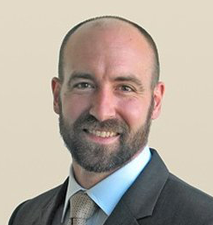Q&A With Aaron Binkley of Digital Realty Trust
The Green Grid recently sat down with Aaron Binkley, director of sustainability programs at data center REIT Digital Realty and a member of The Green Grid board, to get his take on sustainability in the data center market and what he predicts for the future.
1) You recently wrote about how the public is helping to fuel the growth of energy-efficient data centers. What impact do you think this will have on the future? Is there more the public can do to drive this?
I will highlight a few trends that point to a possible direction for the future. First, there is a secular trend of society and businesses becoming more reliant on the internet, and by extension, data centers. Next, according to Guardian Sustainable Business, 83% of global millennials want brands and companies to become more active in solving the world’s challenges. And finally, Accenture research indicates that just 28% of people believe business is doing enough to protect the planet and contribute to society.
This indicates that data centers are essential to the lifestyle current and future generations want and expect. They think business should be doing more to protect the planet, and they expect companies to address their impacts. We see this perspective informing many of our customers as they look to deploy their data centers. These companies employ, and may have been founded by, members of an eco-conscious generation. We expect their values and priorities will continue to drive the data center to innovate and reduce its environmental footprint.
2) The Green Grid’s EMEA team conducted research that found that many data center managers are slow to adopt key metrics that will make data centers more efficient. Have you encountered this issue in your work?
Data centers are complex systems of interconnected physical infrastructure that are designed to be online 24-7-365. Making step-change improvements rapidly is a lot different in this environment than it is in an app, and the stakes are high because no one will accept an outage. That said, there is intense focus on innovation in data centers. Metrics developed by The Green Grid are the benchmarks by which the industry measures gains – PUE is the headline metric, but data center operators also use WUE, CUE, and the Data Center Maturity Model, which is getting visibility as operators challenge themselves to make holistic improvements.
3) We are accumulating more data by the second, which means we will need to find ways to store it in the future. While we constantly see new creative ideas to meet this demand (data centers underwater, powered by wind/sun), do you think the research is happening quick enough to meet the demand?
We see a rapid evolution in the “industrialization” of data center facilities as their size and scale grows. This is an area where the industry will continue to innovate and drive out costs to meet growing demands of data storage and compute. We have seen many customers move, over time, along the spectrum of resiliency from 2N+1 to N+1 architectures without sacrificing resiliency due to improvements in software, mirroring, networking, geographic distribution, and the like. I am excited to see this scaling and industrialization being applied to renewable energy procurement by large data center operators. A market that did not exist a decade ago – corporate procurement of utility-scale renewables – has created demand for more than 1.3 gigawatts of new renewable energy in just the first half of 2017. That has the opportunity to fundamentally decouple the data center industry’s impact on the environment from its growth in energy use.
Do you want to be part of the movement towards energy-efficient data centers? Check out the projects The Green Grid is working on and see how you can contribute.
